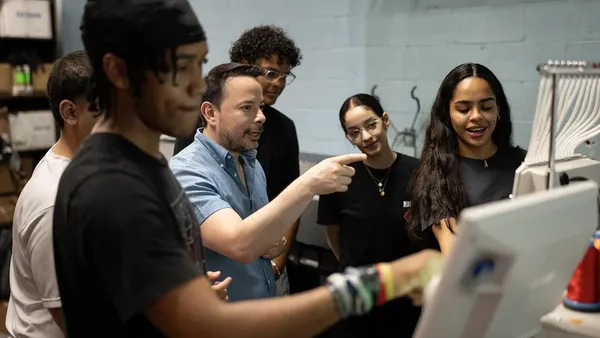Dive Brief:
- As young readers, students often make mistakes that can impact what they understand. Helping them watch out for these tricky errors can help them better comprehend what they’re reading, Achieving Reading Founder Brooke MacKenzie writes for Edutopia.
- Students can use metacognition — thinking about how we think — which teaches them to pause as they read, consider how they’re feeling and what they’re picturing in their mind. Feelings of discomfort can indicate they may not be understanding the words before them.
- Reading specialist Brooke MacKenzie uses a chart with questions for students to ask themselves before moving forward, such as "Can I retell the story?" If students struggle with the questions, educators can have children slow down and read again.
Dive Insight:
Reading is the door to learning in all subject areas. But reading a string of words without absorbing the idea behind them, is not really learning. Students need to be able to comprehend the concept behind what’s written to push their understanding. Teaching students to monitor their comprehension as they read benefits students even in math because students need to be able to understand the tasks they’re being asked to do and comprehend the instructions.
Comprehension is one of the key cornerstones of literacy — more crucial than simply being able to read in the first place. Colorado’s Department of Education (CDE), for example, lists reading comprehension as one of the five core components for reading literacy, even calling it “the primary purpose of reading,” in its “Elements Comprising the Colorado Literacy Framework.”
The CDE also points to the metacognition strategy that Edutopia mentions, including having teachers demonstrate how to use these methods “to help increase [students’] understanding of what they are reading.” Putting students into small groups to discuss what they’re reading and how they understand the text can also support successful results.
Switching up what students read — increasing their literacy diet, in a way, may be another literacy and comprehension strategy educators can pursue, noted Education Week. Here, teachers approach reading assignments in the same way a chef prepares a balanced meal, making sure enough variety is included. Rather than think of reading as increasing literacy, here the goal is to expand the richness of what students read, so cognitive abilities are pushed and children are exposed to new ideas. When students understand what they read, they can become thinkers for life — always learning and expanding on how they see the world.





 Dive Awards
Dive Awards





